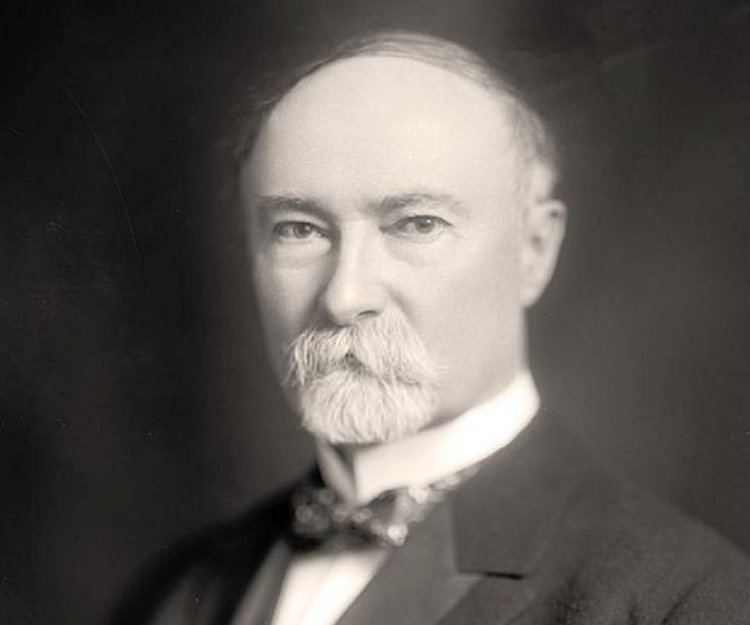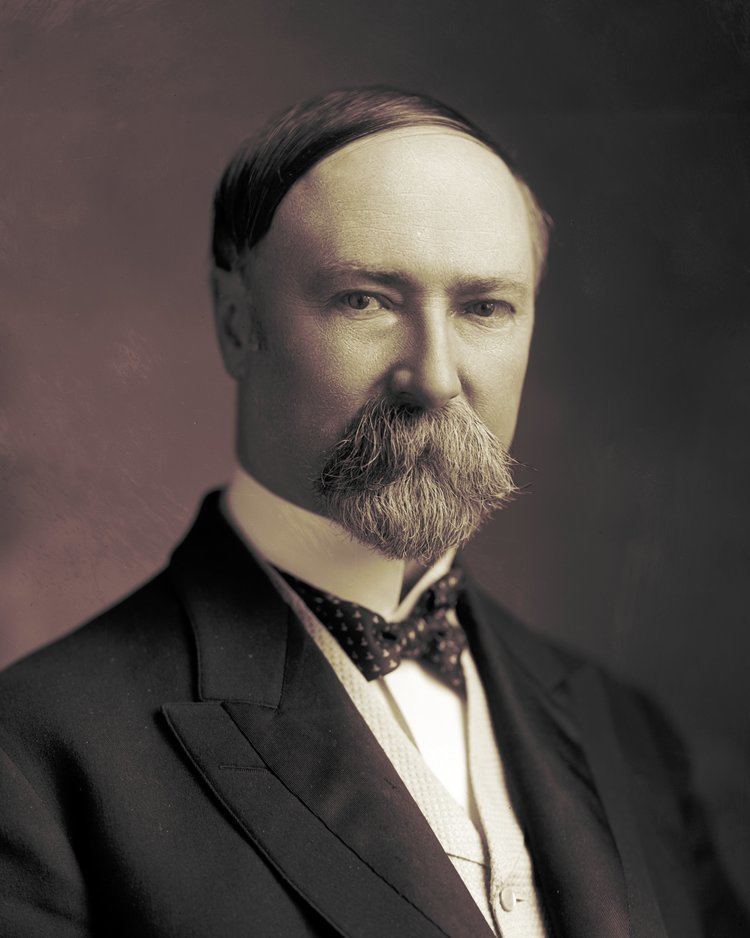Nationality American | Name Charles Fairbanks Role Former American senator | |
 | ||
Full Name Charles Warren Fairbanks Born May 11, 1852Unionville Center, Ohio ( 1852-05-11 ) Similar People Theodore Roosevelt, William Howard Taft, Elihu Root, George B Cortelyou, Dick Cheney | ||
Previous office Senator (IN) 1897–1905 | ||
Charles W Fairbanks' Birthday
Charles Warren Fairbanks (May 11, 1852 – June 4, 1918) was an American politician who served as the 26th Vice President of the United States from 1905 to 1909 and a Senator from Indiana from 1897 to 1905. He was also the Republican vice presidential nominee in the 1916 presidential election.
Contents
- Charles W Fairbanks Birthday
- Video of the Gravesite of Charles W Fairbanks
- Early life
- Early career
- Senator
- Vice President
- Hughes running mate
- Death
- Legacy
- References

Born in Unionville Center, Ohio, Fairbanks moved to Indianapolis after graduating from Ohio Wesleyan University. He became an attorney and railroad financier, working under railroad magnate Jay Gould. Fairbanks delivered the keynote address at the 1896 Republican National Convention and won election to the Senate the following year. In the Senate, he became an adviser of President William McKinley and served on a commission that helped settle the Alaska boundary dispute.

The 1904 Republican National Convention selected Fairbanks as the running mate for President Theodore Roosevelt. As vice president, Fairbanks worked against Roosevelt's progressive policies. Fairbanks unsuccessfully sought the Republican nomination at the 1908 Republican National Convention and backed William Howard Taft in 1912 against Roosevelt. Fairbanks sought the presidential nomination at the 1916 Republican National Convention, but was instead selected as the vice presidential nominee, serving on a ticket with Charles Evans Hughes. In the 1916 election, the Republican ticket lost to the Democratic ticket of President Woodrow Wilson and Vice President Thomas R. Marshall.

Video of the Gravesite of Charles W. Fairbanks
Early life
Fairbanks was born in a log cabin near Unionville Center, Ohio, the son of Mary Adelaide (Smith) and Loriston Monroe Fairbanks, a wagon-maker. Fairbanks's ancestry traced back to Puritan followers of Oliver Cromwell, with Jonathan Fairbanks being the first family member to reach America, in 1632. Fairbanks in his youth saw his family's home used as a hiding place for runaway slaves. After attending country schools and working on a farm, Fairbanks attended Ohio Wesleyan University, where he graduated in 1872. While there, Fairbanks was co-editor of the school newspaper with Cornelia Cole, whom he married after both graduated from the school.
Early career
Fairbanks' first position was as an agent of the Associated Press in Pittsburgh, Pennsylvania, reporting on political rallies for Horace Greeley during the 1872 presidential election. He studied law in Pittsburgh before moving to Cleveland, Ohio, where he continued to work for the Associated Press while attending a semester at Cleveland Law School to complete his legal education. Fairbanks was admitted to the Ohio bar in 1874, and moved to Indianapolis, Indiana.
During his early years in Indiana, Fairbanks was paid $5,000 a year as manager for the bankrupt Indianapolis, Bloomington and Western Railroad. With the assistance of his uncle, Charles W. Smith, whose connections had helped him obtain the position, Fairbanks was able to become a railroad financier, and served as counsel for millionaire Jay Gould.
Prior to the 1888 Republican National Convention, federal judge Walter Q. Gresham sought Fairbanks' help in seeking the nomination for U.S. President. While the bid was ultimately unsuccessful, Fairbanks began to take an even greater interest in politics, falling short in a campaign for the United States Senate in 1893.
He was elected as a Republican to the United States Senate in 1897, after having delivered the keynote address during the convention that nominated William McKinley for President.
Senator
During his eight years in the U.S. Senate, Fairbanks served as a key adviser to McKinley during the Spanish–American War and was also the Chairman of the Committee on Immigration and the Committee on Public Buildings and Grounds. In 1898, Fairbanks was appointed a member of the United States and British Joint High Commission which met in Quebec City for the adjustment of Canadian questions, including the boundary dispute about Alaska.
Vice President
Fairbanks was elected Vice President of the United States in 1904 on the Republican ticket with Theodore Roosevelt and served a four-year term, 1905 to 1909. He became the first vice president to serve a complete term without casting any tie-breaking votes as President of the Senate. Fairbanks, a conservative whom Roosevelt had once labeled a "reactionary machine politician" (and who had been caricatured as a "Wall Street Puppet" during the campaign), actively worked against Roosevelt's progressive "Square Deal" program. Roosevelt did not give Fairbanks a significant role in his administration, and (having chosen not to seek reelection) strongly promoted William Howard Taft as his potential successor in 1908. Fairbanks also sought the Republican nomination for President, but was unsuccessful and returned to the practice of law. In 1912, Fairbanks supported Taft's reelection against Roosevelt's Bull Moose candidacy.
Hughes' running mate
In 1916, Fairbanks was in charge of establishing the platform for the Republican party. In 1916, he sought the Republican presidential nomination, and although he failed in that bid, he did win the nomination for vice president as the running-mate of Charles Evans Hughes on June 10. Five months later, Hughes and Fairbanks lost a close election to the Democratic incumbents Woodrow Wilson and Thomas Marshall. Fairbanks is the most recent former Vice President to seek reelection for a non-consecutive term (with Adlai Stevenson I before him). Fairbanks once again resumed the practice of law in Indianapolis, but his health started to fail.
Death
He died of nephritis in his home on June 4, 1918. He was interred in Crown Hill Cemetery.
Legacy
The city of Fairbanks, Alaska, and the Fairbanks North Star Borough it lies within; the Fairbanks School District in Union County, Ohio; Fairbanks, Minnesota; Fairbanks, Oregon; and Fairbanks Township, Michigan, are named after him.
In 1966, the Indiana Sesquicentennial Commission placed an Indiana historical marker in front of Fairbanks' home at 30th and Meridian Streets in Indianapolis. On May 15, 2009, an Ohio historical marker was dedicated in Unionville Center, commemorating Fairbanks' birthplace.
